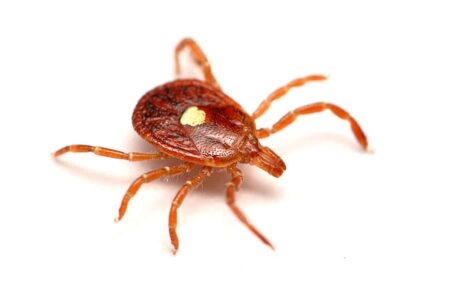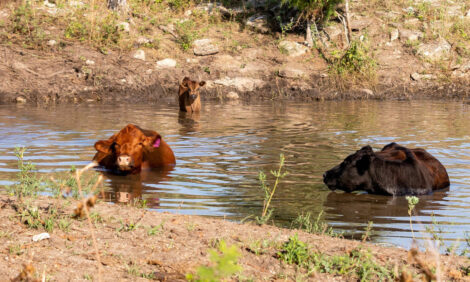



Dairy Producers Robbed by Mycotoxins Every Day
The contamination of animal feed with mycotoxins is a worldwide problem in animal production, writes Radka Borutova, Business development manager, Nutriad.The complex diet of ruminants, consisting of forages, concentrates, and silages, can be a source of diverse mixtures of mycotoxins that contaminate individual feed components.
Concomitantly, there has been an increase in feed intake to meet the greater nutrient demand, which often exposes cows to mycotoxin contaminated feeds.
Dairy cows, like other ruminants, have some capacity to protect themselves against the harmful effects of mycotoxins due to the detoxifying action of certain ruminal microorganisms. However, modern dairy cows have a much faster passage of feed through the rumen, thus less time for rumen microbes to detoxify mycotoxins.
Once mycotoxins have passed through the rumen without any modification, they enter the bloodstream and affect immunity and liver metabolism.
Experiments show that ruminal degradation is in the range of 0 to 90 per cent depending on the level and type of mycotoxin.
In a scientific investigation the aflatoxin load in the feed was detoxified up to 40 per cent in the rumen.
Even 90 per cent of zearalenone (ZEN) can be degraded but the main metabolite is alpha-zearalenol which is several times more oestrogenic than ZEN itself. Degradation of ochratoxin A and deoxynivalenol (DON) in the rumen was investigated many times with various results.
The combined factors of high production, incompetent rumen microflora action, unbalanced nutrition (i.e. subclinical acidosis) and mycotoxins in the feed, are key factors allowing mycotoxins to escape detoxification and be absorbed by the intestine as in monogastrics.
Symptoms of mycotoxicosis in a dairy herd may be non-specific, wide ranging and sub-clinical depending on the mycotoxins involved and their interaction with other stress factors, such as farm management, presence of infectious diseases and general animal welfare.
Invisible but detrimental mycotoxins
Recognising when mycotoxins are causing poor health and performance is extremely difficult. Some mycotoxins, such as zearalenone, predominantly affect reproduction and are relatively easy to identify. Also, high levels of mycotoxins that can cause acute intoxications and dramatic changes in milk production and animal health status can be determined much more easily.
Unfortunately, the most common and most difficult challenges to identify occur when rations contain low levels of mycotoxins and the health effects are subclinical.
Presence of mycotoxins in feed is very often connected with increased incidence of metabolic disorders as ketosis, retained placentas, displaced abomasums, mastitis, metritis, lameness, elevated somatic cell counts and consequently slightly decreased milk production. Subclinical mycotoxicoses reduces profitability by lowering milk production and quality by increasing expenses from inappropriate veterinary therapies.
Mycotoxins can be the primary agent causing acute health or production problems in a dairy herd, but more likely, mycotoxins are a factor contributing to chronic problems including a higher incidence of disease, poor reproductive performance or suboptimal milk production.
They exert their effects through four primary mechanisms: (1) intake reduction or feed refusal, (2) reduced nutrient absorption and impaired metabolism; (3) alterations in the endocrine and exocrine systems; and (4) suppression of the immune system.
Recognition of the impact of mycotoxins on animal production has been limited by the difficulty of diagnosis. Symptoms are often nonspecific and can be the result of a progression of effects, making a diagnosis difficult or impossible because of the complex clinical results with a wide diversity of symptoms.
Incidence of mastitis increased when feeding mycotoxins
Mastitis is defined as an inflammation of the mammary gland. Mastitis usually occurs primarily in response to intramammary bacterial infection, but also to intramammary mycoplasmal or fungal infections.
Mechanical trauma, thermal trauma, and chemical insult predispose the gland to intramammary infection. Occurrence of mastitis depends on the interaction of host, agent, and environmental factors (Zhao and Lacasse, 2007).
Metritis is defined as inflammation of both the endometrial and muscular layers of the uterus. Risk factors for developing postpartum metritis are: retained placenta, dystocia, stillbirth, twinning, uterine prolapsed, milk fever, poor hygiene during calving, ketosis etc. (Palmer, 2003).
Somatic cell counts (SCC) taken on bulk tank milk are a good indicator of the general state of udder health in the dairy herd.
Somatic cells in milk consist mainly of white blood cells produced by the cow to destroy bacteria causing mastitis that enter the udder and to repair damaged udder tissue. These cells are always present in milk but when an infectious agent enters the udder or when the udder is damaged, the number of somatic cells shed by the individual cow increases.
Tissue damage and the increased SCC resulting from mastitis infection can block the tiny milk ducts in the udder, resulting in lower production when the milk secreting cells above the blockage are dried off.
An estimate of milk production lost as predicted from bulk tank somatic cell count is given in Table 1. Based on this table, herds with cell counts over 500,000 SCC could be producing from 8 to 20 per cent below potential because of the presence of sub-clinical mastitis infections (www.omafra.gov, 2011).
Maximum legally allowed SCC in the US are 750,000/ml. This limit is high compared to many other international standards. Much of Europe, New Zealand and Australia have a limit of 400,000/ml and Canada has a limit of 500,000/ml.
The study of Kosteleva at al. (2009) concluded that feed naturally contaminated with fusarium mycotoxins depressed blood neutrophil phagocytosis which led to affected immune function of dairy cows.
Mann et al. (1984) observed a reduction in neutrophil function in vivo in T-2 toxin treated calves. Kidd et al. (1995) observed a reduction in turkey macrophage adherence and phagocytosis after exposure to DON in vitro.
Takayama et al. (2005) investigated the effect of DON on bovine neutrophils in vitro and found suppression of chemiluminescence.
Pang et al. (1987) noted that inhalation of T-2 toxin in swine causes depressed alveolar macrophage phagocytosis. Gerberick and Sorenson (1983) observed reduced alveolar macrophage function when exposed to T-2 toxin in vitro.
| Table 1 - Estimated milk production lost, in relation to bulk tank somatic cell count. | |
| Somatic Cell Count | Milk Production Loss ( per cent) |
| 100,000 | 0 |
| 200,000 | 2 |
| 300,000 | 4 |
| 400,000 | 6 |
| 500,000 | 8 |
| 600,000 | 10 |
| 700,000 | 12 |
| 800,000 | 14 |
| 900,000 | 16 |
| 1,000,000 | 18 |
| Stiles and Rodenburg, 1996 | |
Laminitis: can mycotoxins be involved?
Another aspect that should be taken into account is the higher incidence of lameness on dairy farms feeding rations contaminated with mycotoxins.
Lameness alone in dairy farms already causes large financial losses due to decreased milk production, impaired reproductive performance and higher culling and veterinary costs.
In a study conducted in 2010 by Pirestani and Toghyani it was proved that increase in the levels of aflatoxin (from 13.01 to 110.63 ppb) concentration in the feedstuff was responsible for the increase in aflatoxin M1 in milk samples. Also, levels of aflatoxin in diet and milk caused retained placenta which is a reproduction problem (delayed conception).
Prevalence of lameness was significantly affected by milk aflatoxin level (P ≤ 0.05). It was concluded that there was a significant relationship between aflatoxin levels with lameness and retained placenta.
There was a significant relationship between aflatoxin and lameness (Table 1). This might be due to the aflatoxin and its effect on the sensitive hoof lamina, unsuitable free stall or dry lot, nutrition and poor management.
Additionally comparisons between normal cattle and lame cattle showed a slightly longer interval between calving to first insemination and conception in lame cattle. This difference may be related to the pain caused by lameness associated with aflatoxins, which results in reduced feed intake and thus lower energy intake, hormonal and nutritional imbalances (Ozsoy‘s et al., 2005; Sood and Nanda, 2006).
Korosteleva et al. (2009) observed that 500 ppb of deoxynivalenol may also reduce phagocytic and neutrophilic activity and consequently determine serious symptoms when mastitis and lameness occurs. Lameness is one of the most predominant clinical signs of ergot alkaloid poisoning together with reduced weight gain and agalactia (Whitlow, 1993).
| Table 2 – The rank correlation between aflatoxins in feed and lameness in two dairy farms. | ||||||
| Lameness | Aflatoxin levels | |||||
| M1 | B1 | B2 | G1 | G2 | Total | |
| Herd A(13.01 ppb Afla) | 0.022 | 0.112 | - | -0.011 | -0.011 | -0.112 |
| Herd B(110.63 ppb Afla) | 0.432* | 0.425 | 0.323 | 0.389 | - | 0.425 |
| * Significant at p ≤ 0.05; – = not detected. | ||||||
Conclusion
The best practical way to control mycotoxin levels is to use rapid test kit systems for the analysis of mycotoxins in raw ingredients which are not yet in silos.
Different rapid test kit systems are validated for different mycotoxins and commodities which offer a very quick and effective way of raw material screening before they enter the feed mill.
Once the levels are known, every feed mill can estimate the quality of its raw ingredients in terms of mycotoxin contamination and can effectively and more precisely (dosage adjustment) apply feed additives during feed production.
Another strategy of mycotoxin risk management is to test for the presence of mycotoxins in finished feeds including TMR and silages. This method has some advantages and disadvantages.
The most important advantage is that as every raw ingredient can bring its own mycotoxins into the finished feed. Some important raw ingredients whose inclusion is not high (5-10 per cent) and which can still cause significant contamination of finished feed can be inadvertently overlooked if not tested.
Storage mycotoxin contamination (ochratoxins, aflatoxins) can be prevented by keeping temperature and moisture content in silos low whilst grain is regularly aerated. In case perfect storage conditions cannot be guaranteed, usage of mould inhibitors is highly recommended.
Application of specific feed additives which are able to help negate the negative effects of different mycotoxins in dairy cows are highly recommended.
Author: Radka Borutova, Business development manager, Nutriad
References
Gerberick GF and Sorenson WG (1983). Toxicity of T-2 toxin, a Fusarium mycotoxin, to alveolar macrophages in vitro. Environ. Res. 32: 269–285.
Kidd MT, Hagler WM and. Qureshi MA (1995). Trichothecene mycotoxins depress the mononuclear-phagocytic system of young turkeys. Immunopharm. Immunotox. 17: 385–398.
Korosteleva SN, Smith TK, Boermans HJ (2009). Effects of feed naturally contaminated with Fusarium mycotoxins on metabolism and immunity of dairy cows. Journal of Dairy Science, 92: 1585-1593.
Mann DD., Buening GM, Osweiler GD, and Hook BS (1984). Effect of subclinical levels of T-2 toxin on the bovine cellular immune system. Can. J. Comp. Med. 48: 308–312.
Ozsoy S, Altunatmaz K, Horoz H, Kasikcle G, Alkan S, Bilat T (2005). The relationship between lameness, fertility and aflatoxin in a dairy cattle herd. Turk. J. Vet. Anim. Sci. 29: 981-986.
Palmer C (2003). Postpartum metritis in cattle: A review of the condition and the treatment. Veterinary Rounds, Vol. 3, Issue 8.
Pang VF, Swanson SP, Beasley VR, Buck WB and Haschek WM (1987). The toxicity of T-2 toxin in swine following topical application. Fundam. Appl. Toxicol. 9: 41–49.
Sood P, Nanda A (2006). Effect of lameness on estrous behavior in crossbred cows. Theriogenology, 66: 1375-1380.
Stiles R and Rodenburg J. Bulk tank somatic cell counts, Agdex 410/662
Whitlow LW (1993). Mycotoxin contamination of silages: a potential cause of poor production and health in dairy herds. pp. 220-231, In: “Silage Production From Seed to Animal”. NRAES- 67, Northeast Regional Agricultural Engineering Service, Ithaca, NY.
www.omafra.gov.on.ca/english/livestock/dairy/facts/84-031.htm, April 2011.
Takayama HN. Mikami Shimada O and Murata H (2005). Suppressive effect of deoxynivalenol, a Fusarium mycotoxin, on bovine and porcine neutrophil chemiluminiscence: An in vitro study. J. Vet. Med. Sci. 67: 531–533.
Zhao X and Lavasse P (2007). Mammary tissue damage during bovine mastitis: Causes and control. J. Anim. Sci. 86: 57-65.



